RESISTANCE CINEMA Presents “BEFORE THEY DIE” Mportant Films & Tulsa Virtual Media Partners, Produced and Directed by REGGIE TURNER, & J. DENISE CLEMENT, Copyright © 2010 Mportant Films, LLC. 92 minutes
WHEN: Sunday October 31, 2010 1:15 PM
WHERE: Community Church of NY Gallery Room, 28 East 35th st. @ Park ave.
ADMISSION: Free, donations appreciated
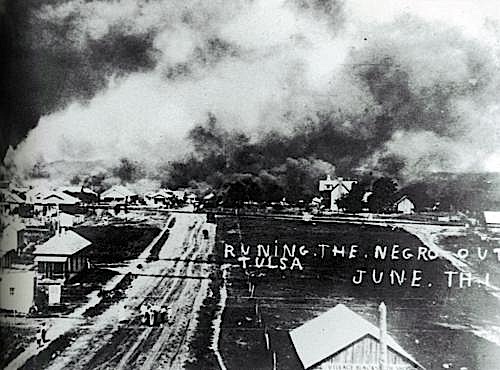 The worst race riot in the history of the United States, but most people have never heard of it. Tulsa, Oklahoma 1921, in less than 24 hours the prosperous
The worst race riot in the history of the United States, but most people have never heard of it. Tulsa, Oklahoma 1921, in less than 24 hours the prosperous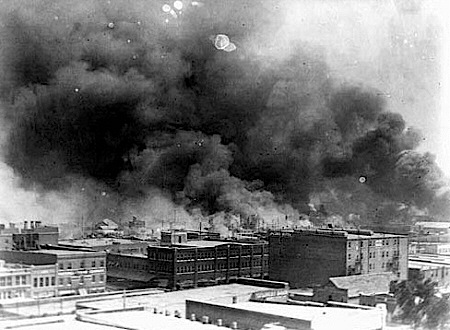 African-American section of Greenwood, also known as “Black Wall Street,” was completely destroyed. An estimated 300 killed, over 10,000 people displaced overnight as a 42 square block area of their homes and businesses were burned to the ground by a white mob that had been deputized by the sheriff.
African-American section of Greenwood, also known as “Black Wall Street,” was completely destroyed. An estimated 300 killed, over 10,000 people displaced overnight as a 42 square block area of their homes and businesses were burned to the ground by a white mob that had been deputized by the sheriff.
This documentary is the story of the survivors of the 1921 Tulsa Race Riot and their quest for justice. There are 45 survivors still alive today. It is a story about the struggle for the soul of America and efforts to right a wrong that is long past due.
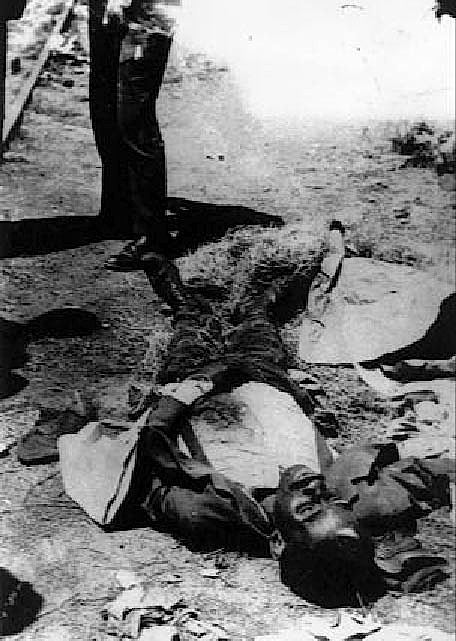 The riot, which began on May 31, 1921, was initiated by an incident that happened the day before. On the morning of May 30, a black man named Dick Rowland stepped into Tulsa’s Drexel Building to use the restroom. The elevator operator was a young white girl named
The riot, which began on May 31, 1921, was initiated by an incident that happened the day before. On the morning of May 30, a black man named Dick Rowland stepped into Tulsa’s Drexel Building to use the restroom. The elevator operator was a young white girl named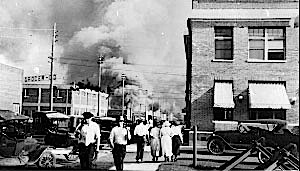 Sarah Page. A scream was heard from inside the elevator, and Rowland ran out. While there is no conclusive evidence, it was the general belief of white Tulsans that Rowland attempted to assault Page.
Sarah Page. A scream was heard from inside the elevator, and Rowland ran out. While there is no conclusive evidence, it was the general belief of white Tulsans that Rowland attempted to assault Page.
Rowland was arrested, and subsequent headlines in local newspapers stirred up the white and black populations of Tulsa. Talk of lynching arose among whites, and a crowd of whites and blacks gathered outside the courthouse where Rowland was being held on the night of May 31. A gun discharged while a white man was trying to disarm a black man, causing the incident to erupt into a much larger racial conflict.
By the early morning of June 1, the wholesale burning and pillaging of black Tulsa had begun. Blacks were greatly outnumbered, and the police were not effective in controlling the riot. The National Guard declared martial law 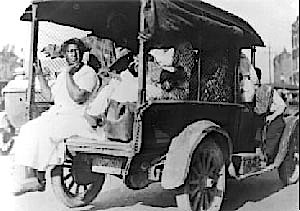 throughout the city at 11:29 am, bringing an end to most violence. The Guard then began rounding up blacks for internment. Most white rioters returned to their homes the night of June 1, while much of Tulsa’s black population was imprisoned. The total number of people killed during the riot is debatable – estimates range from 27 to over
throughout the city at 11:29 am, bringing an end to most violence. The Guard then began rounding up blacks for internment. Most white rioters returned to their homes the night of June 1, while much of Tulsa’s black population was imprisoned. The total number of people killed during the riot is debatable – estimates range from 27 to over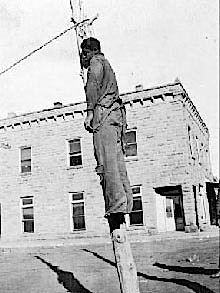 250. It is generally believed that the number of white deaths have been under-estimated.
250. It is generally believed that the number of white deaths have been under-estimated.
It took nearly a decade for Tulsa to recover from the physical destruction it endured from the riot. Despite its significance, both black and white Tulsans claim the incidence has been “hushed up” and not adequately recognized. It is scarcely 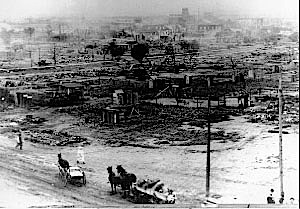 mentioned in history books, especially Oklahoman history books. In 1997, The Tulsa Race Riot Commission was formed to investigate the riot, and has been working towards getting reparations.
mentioned in history books, especially Oklahoman history books. In 1997, The Tulsa Race Riot Commission was formed to investigate the riot, and has been working towards getting reparations.